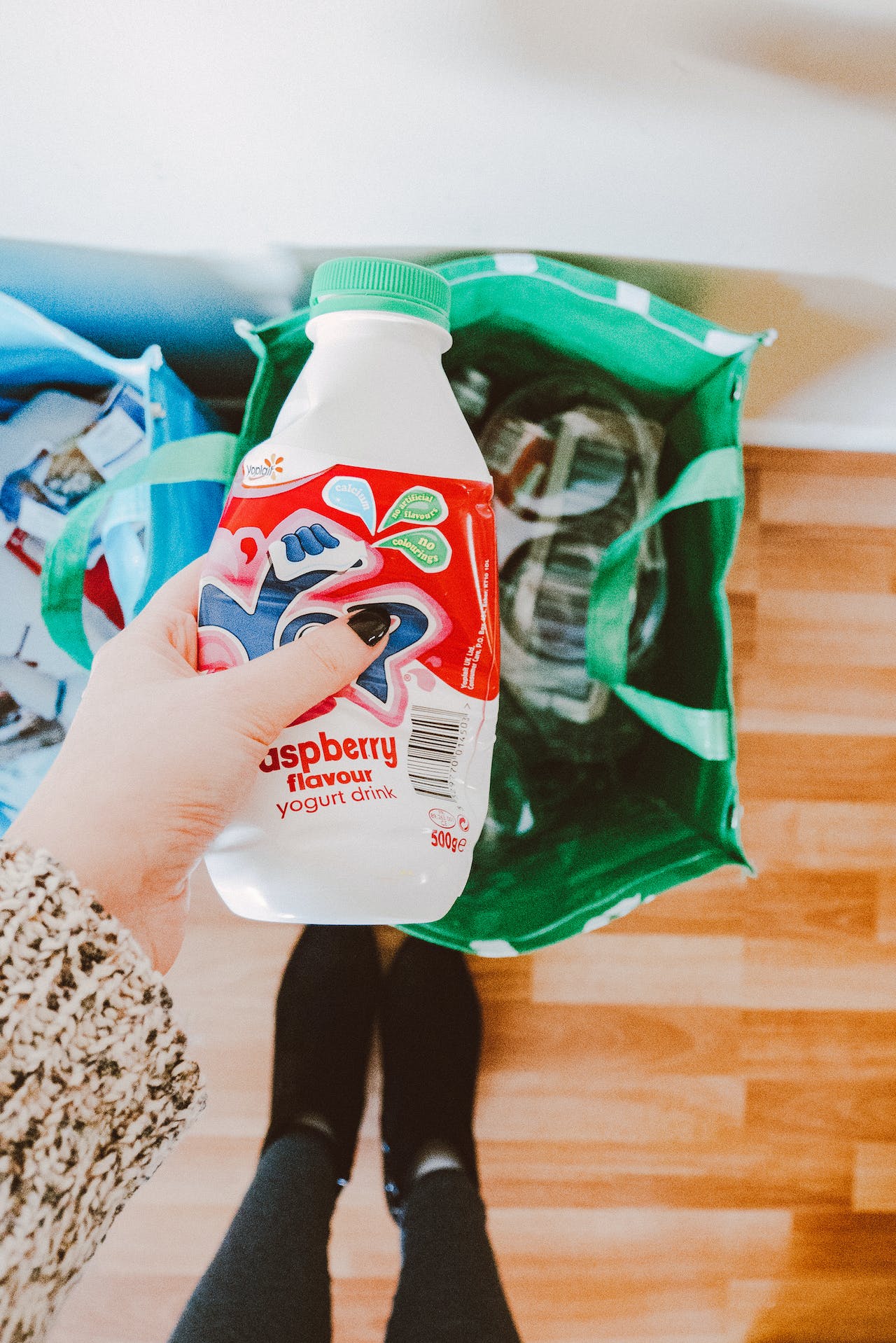Saving the Planet One Step at a Time: Learn How to Recycle and Make a Difference

Recycling is a crucial step we can take to protect our planet and create a sustainable future. By learning how to recycle, we can reduce the amount of waste that ends up in landfills and minimize the extraction of natural resources. Recycling not only helps preserve the environment but also conserves energy and reduces pollution. It is a simple yet powerful way to make a positive impact on the planet. Discover the importance of recycling and learn how to recycle various materials in this article.
One of the fundamental reasons why recycling is important is that it helps conserve resources. Many products, such as paper, glass, and aluminum, can be recycled and turned into new items. By recycling these materials, we can reduce the need for raw materials and the energy required to produce new products. For example, recycling one ton of paper can save 17 trees, 7,000 gallons of water, and 380 gallons of oil. When we recycle, we are effectively extending the life cycle of these materials and reducing our reliance on finite resources.
Another significant aspect of recycling is waste reduction. Each year, millions of tons of waste end up in landfills, creating environmental hazards and contributing to greenhouse gas emissions. By recycling, we can divert a significant portion of this waste from landfills, reducing the strain on our environment. Recycling also helps minimize the release of harmful pollutants and toxins into the air, water, and soil. By reducing waste and pollution, recycling plays a vital role in creating a healthier and cleaner planet.
How Does Recycling Help the Environment?
Recycling has numerous environmental benefits that can have a lasting impact on our planet. One of the primary ways recycling helps the environment is by conserving energy. Manufacturing products from recycled materials requires less energy compared to using virgin materials. For instance, producing recycled aluminum requires 95% less energy than producing aluminum from raw materials. By using recycled materials and learning how to recycle, we can significantly reduce greenhouse gas emissions and combat climate change.
Recycling also helps reduce air and water pollution. When waste decomposes in landfills, it releases harmful gases, such as methane, which contribute to global warming. By diverting waste from landfills through recycling, we can reduce the amount of methane released into the atmosphere. Moreover, recycling reduces the need for extracting and processing raw materials, which often involves environmentally damaging practices, such as mining and logging. By minimizing these activities, recycling helps preserve ecosystems and protect wildlife habitats.
In addition to conserving resources and reducing pollution, recycling also helps conserve water. Many manufacturing processes require large amounts of water, and by recycling materials, we can significantly decrease water consumption. For example, producing recycled paper uses 50% less water compared to producing paper from virgin pulp. By conserving water, we can ensure that this precious resource is available for future generations and reduce the strain on water sources.
Different Types of Recycling
Recycling encompasses various materials and products, each requiring specific processes to be recycled effectively. Here are some of the most common types of recycling:
- Paper Recycling: Paper is one of the most commonly recycled materials. It can be transformed into new paper products through processes such as pulping, filtering, and drying. Recycling paper helps conserve trees, energy, and water.
- Plastic Recycling: Plastic recycling involves collecting and processing plastic waste to create new products. Different types of plastic require different recycling methods, and it is essential to follow local recycling guidelines to ensure proper disposal.
- Glass Recycling: Glass is 100% recyclable and can be melted down and remolded into new glass products. Recycling glass reduces the demand for raw materials and saves energy.
- Metal Recycling: Metals such as aluminum and steel can be recycled indefinitely without losing their properties. Recycling metals reduces the need for mining and saves energy.
- Electronic Waste Recycling: Electronic waste, or e-waste, includes items like computers, cell phones, and televisions. These items contain valuable materials that can be recovered through specialized recycling processes.
- Organic Waste Recycling: Composting is a form of recycling that involves decomposing organic waste, such as food scraps and yard trimmings, to produce nutrient-rich soil amendments.
By understanding the different types of recycling, we can ensure that we recycle each material properly, maximizing its potential for reuse and minimizing its environmental impact.
Step-by-Step Guide on How to Recycle at Home

Recycling starts at home, and by following a few simple steps, you can make a significant difference in reducing waste and conserving resources. Here is a step-by-step guide on how to recycle at home:
- Educate Yourself: Research and familiarize yourself with the recycling guidelines and regulations in your community. Each municipality may have different rules regarding what materials can be recycled and how they should be sorted.
- Set Up Recycling Bins: Place separate recycling bins for different materials, such as paper, plastic, glass, and metal, in a convenient location in your home. Ensure that the bins are clearly labeled to avoid confusion.
- Sort and Clean: Before recycling, make sure to rinse and clean any containers to remove any food residue or contaminants. Sorting the recyclables into the appropriate bins ensures that they can be processed correctly.
- Reduce and Reuse: Remember that recycling should be the last resort. Whenever possible, try to reduce your consumption and reuse items instead of throwing them away. For example, using reusable water bottles and bags can significantly reduce plastic waste.
- Drop-Off or Curbside Collection: Find out if your community offers curbside recycling collection or if you need to drop off your recyclables at a designated recycling center. Follow the collection schedule and guidelines provided by your municipality.
- Educate Others: Spread awareness about recycling within your community. Encourage your friends, family, and neighbors and teach them how to recycle and provide them with the necessary information to get started.
By following these steps, you can establish a recycling routine in your home and contribute to a cleaner and more sustainable environment.
Recycling Tips and Tricks
Recycling can sometimes be confusing, but with a few tips and tricks, you can become a recycling pro. Here are some useful tips to make your recycling efforts more effective:
- Know Your Local Recycling Guidelines: Each municipality has specific guidelines for recycling. Take the time to familiarize yourself with these guidelines to ensure you are recycling correctly.
- Don’t Contaminate: Avoid contaminating your recyclables with non-recyclable materials. Even a small amount of contamination can render an entire batch of recyclables unusable.
- Reduce Packaging Waste: Choose products with minimal packaging or packaging made from recyclable materials. By reducing packaging waste, you can decrease the amount of waste that needs to be recycled.
- Recycle Electronics Responsibly: Electronic waste should not be thrown in with regular recyclables. Look for e-waste collection events or drop-off locations in your community to ensure these items are recycled properly.
- Consider Composting: Instead of throwing organic waste in the trash, consider starting a compost pile. Composting can turn food scraps and yard trimmings into nutrient-rich soil, reducing the amount of waste sent to landfills.
- Recycle Beyond Your Home: Many communities have recycling programs for items like batteries, light bulbs, and clothing. Research local drop-off locations for these items and recycle them appropriately.
By following these tips, you can enhance your recycling efforts and make a more significant impact on the environment.
Creative Ways to Repurpose and Upcycle Items
Recycling is not limited to putting items in the recycling bin. There are numerous creative ways to repurpose and upcycle items, giving them a new life and reducing waste. Here are some ideas for repurposing common household items:
- Glass Jars: Turn glass jars into storage containers for pantry staples or use them as vases for flowers and plants.
- Plastic Bottles: Cut plastic bottles to create planters for small herbs or transform them into bird feeders.
- Old Clothing: Donate gently used clothing to charity or repurpose them into rags or quilts.
- Newspapers: Use newspapers as wrapping paper or transform them into seedling pots for gardening.
- Wooden Pallets: Repurpose wooden pallets into furniture, such as coffee tables or bookshelves.
- Corks: Collect wine corks and create unique coasters or bulletin boards.
These are just a few examples of how you can repurpose items and give them a new purpose. Get creative and think outside the box to find unique ways to reduce waste and add a touch of creativity to your home.
How to Start a Recycling Program in Your Community
If you want to take your recycling efforts to the next level, you can consider starting a recycling program in your community. Here are the steps to establish a recycling program:
- Research and Planning: Understand the recycling needs and resources in your community. Identify existing recycling programs and assess the gaps that need to be addressed.
- Form a Recycling Committee: Gather a group of like-minded individuals who are passionate about recycling. Establish roles and responsibilities within the committee to ensure effective management.
- Collaborate with Local Authorities: Reach out to local government officials or waste management departments to seek their support and guidance. They can provide valuable information and resources to help start your program.
- Educate and Raise Awareness: Conduct awareness campaigns to educate the community about the importance of recycling and how to recycle correctly. Utilize various mediums such as social media, workshops, and community events.
- Provide Recycling Infrastructure: Work with local authorities to establish recycling drop-off points or curbside collection programs. Ensure that the infrastructure is easily accessible and clearly labeled.
- Monitor and Evaluate: Regularly assess the progress and impact of your recycling program. Collect data on the amount of waste diverted from landfills and the participation rate in the program. Use this information to make improvements and expand the program if needed.
Starting a recycling program in your community requires dedication and collaboration, but it can have a lasting impact on the environment and inspire others to take action.
The Benefits of Recycling for Businesses
Recycling is not only beneficial for individuals and households but also for businesses. Implementing recycling practices within a business can lead to numerous advantages, both environmentally and economically. Here are some benefits of recycling for businesses:
- Cost Savings: Recycling can reduce waste disposal costs for businesses. By recycling materials instead of sending them to landfills, businesses can potentially save on waste management fees.
- Positive Public Image: Demonstrating a commitment to recycling and sustainability can enhance a business’s reputation. Customers are increasingly conscious of environmental issues and may choose to support businesses that prioritize recycling.
- Compliance with Regulations: Many jurisdictions have regulations in place that require businesses to recycle specific materials. By implementing recycling programs, businesses can ensure compliance with these regulations and avoid penalties.
- Resource Conservation: Recycling helps conserve natural resources, such as timber, water, and minerals. By using recycled materials in their manufacturing processes, businesses can reduce their reliance on virgin resources and contribute to a more sustainable future.
- Employee Engagement: Implementing recycling programs within a business can engage employees and foster a sense of environmental responsibility. Employees who are proud of their company’s sustainability efforts are more likely to be motivated and loyal.
- Innovation and Creativity: Recycling initiatives often require businesses to think innovatively and creatively. Finding ways to repurpose or recycle materials can lead to new product ideas and business opportunities.
By embracing recycling, businesses can demonstrate their commitment to sustainability, reduce costs, and contribute to a greener economy.
Common Misconceptions About Recycling
Despite the widespread adoption of recycling, there are still some common misconceptions that can hinder its effectiveness. Addressing these misconceptions is essential to ensure that recycling efforts are successful. Here are some of the most prevalent misconceptions about recycling:
- Recycling is Too Complicated: While recycling guidelines can vary by location, basic recycling practices are relatively simple. By familiarizing yourself with your local recycling guidelines and following the sorting instructions, you can recycle effectively.
- Recycling Doesn’t Make a Difference: Every item that is recycled instead of being sent to a landfill makes a difference. Collectively, recycling efforts have a significant impact on reducing waste, conserving resources, and minimizing pollution.
- All Plastics are Recyclable: Not all plastics can be recycled. Different types of plastics have different recycling codes, and it is important to check with your local recycling facility to determine which plastics are accepted.
- Recycled Products are Inferior: Recycled products are often just as good as, if not better than, products made from virgin materials. For example, recycled paper can be of high quality and perform just as well as paper made from virgin pulp.
- Recycling is Expensive: While there may be initial costs associated with setting up recycling programs, recycling can lead to long-term cost savings for businesses and municipalities. Additionally, the environmental benefits far outweigh the costs.
- Landfills Can Handle All Waste: Landfills have limited capacity, and as populations grow, finding suitable landfill sites becomes increasingly challenging. Recycling helps alleviate the strain on landfills and extends their lifespan.
By debunking these misconceptions, we can encourage more people to embrace recycling and make informed choices about waste disposal.
Conclusion: How You Can Make a Difference by Recycling
Recycling is a simple yet powerful way to make a difference and contribute to a more sustainable future. By understanding the importance of recycling, the environmental benefits it provides, and the various ways to recycle, you can actively participate in protecting our planet.
Whether you start by recycling at home, repurposing items, or even initiating a recycling program in your community, every step counts. By reducing waste, conserving resources, and minimizing pollution, you can play a vital role in creating a cleaner and healthier environment.
Remember, it’s not just about individual actions but also about spreading awareness and inspiring others to join the recycling movement. Together, we can save the planet one step at a time.
Join the recycling movement today and make a difference in your community.




